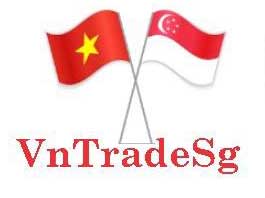Ecommerce sector heats up in Vietnam thanks to more and more foreign investments flowing in
Vietnam witnessed a fierce battle in the e-commerce industry, while billions of US Dollars have been invested with no current return. However, it is still attractive for investors, especially those of foreign origin.
The reasons partly came from the scale and market size. In fact, Vietnam e-commerce was reported as the third-largest market in Southeast Asia (SEA), which expectedly increase the total revenue to US$10 billion in 2020.
In comparison with other markets in SEA, Vietnam got the highest conversion rate across Asian 6. A report from Deloitte emphasised that the online conversion rate of Vietnam reached a peak of 1.3, followed by Indonesia and Singapore with an index of 1.1. It means that commercial brands in Vietnam converted relatively more online visitors to a sale than any other area in SEA.
Overview of e-commerce market in Vietnam
Regarding e-commerce platforms in 2018, Lazada was the most popular platform choice with the monthly traffic of roundly 42.5 million visitors. Unfortunately, it could not protect this position.
In 2019, Shopee raised to become the market leader with the monthly traffic of over 40.7 million, dramatically increasing by 71 per cent compare to its performance in 2018.
With the enormous investment in advertising in music MV, Tiki was successful in capture the market share of Thegioididong, which claimed to be the second-largest platform with a growth rate of 58 per cent to gain average traffic of approximately 35.7 million visitors per month.
Also Read: How COVID-19 is changing traditional retail and e-commerce in SEA
In terms of devices and channels, smartphones still dominate the market, generating over 70 per cent of user traffic. As a result, about 30 per cent of the last shopping trips made in e-commerce apps, surpassing e-commerce websites and manufacturer sites.
Furthermore, Facebook refers to one of the popular channels for online shopping, especially for small retailers due to lower requirements of technical capacity. For website and app developments, e-commerce firms commonly hold a strong in-house developer team, which enclosed with high operating costs.
Unfortunately, the trust of online payment might not have any significant improvement last year. In which, cash on delivery (COD) has been the most proffered payment method, constituting approximately 88 per cent of total transactions.
Only 17 per cent of consumers used e-wallet to make their payments. Fortunately, the increasing rate of the whole e-wallet sector reached 10 per cent, which is over the double value of the year before.
That is why there still be a growing trend for investing in e-wallet business. However, 90 per cent of this market share belongs to five giants, which have a portion of foreign investment range from 30-90 per cent.
One of the on-demand platforms that enjoy the greatest growth in Vietnam could be food delivery. Last year, 50 per cent of customers using food delivery apps to orders their meals due to the surge in the number of delivery apps, which led by Grab Food (63 per cent ) and Now Shipping (43 per cent ).
Also Read: Morning News Roundup: Vietnam’s e-commerce startup Leflair accused of owing US$2M to suppliers
Generation X reported spending more than others, which experienced an average of US$4 for each order, while Generation Z spent only US$2.3.
Undoubtedly, e-commerce in Vietnam has a large space to grow in the next five years. It generates both opportunities and challenges for investors. Here are some key points:
Heavy investment from foreign titans
Vietnam’s e-commerce market is still standing in the initial stage, which requires a tremendous amount of capital to invest in. Apart from the power from domestic sectors, foreign investors have already entered the game.
JD.com, a corporation from China invested two disbursements in Tiki.vn, with undisclosed value to take over the 25 per cent stake. Additionally, another stakeholder of Tiki is VNG with the total investment of roundly US$22.3 million in exchange for a 28.9 per cent stake.
Additionally, Tiki received US$75 million from Northstar Group in 2019, which expected to increase shortly. With enormous capital support, Tiki had a dramatic expansion period in both scale and scope, which currently provide millions of products in its platforms, including flight bookings, insurances, vouchers, motorbikes, and cars.
From 2016 to 2017, Chinese tech giant Alibaba invested US$2 billion to buy 83 per cent of Lazada stake. Moreover, in 2019 Alibaba had announced to double its investment on this Vietnam e-commerce platform.
Also Read: Why 2020 is the year for tech startups in Vietnam
Sendo.vn had received approximately US$1 million from several Japanese companies, including SBI holding, Daiwa PI Partners, and SKS Ventures. Shopee Vietnam also got support from its parent company in Singapore with the amount of US$50 million.
Generally, investment in Vietnam e-commerce currently suffers high risks for investors, which have strong barriers to exit. In fact, the entire commercial platforms have endured a loss that investors might lose all their investment in case of withdrawing.
Promotion wars and greater losses
Vietnam’s e-commerce market is seemingly driven by promotion. Particularly, 46 per cent of customers claimed that they choose e-commerce sites because of the promotion it offers.
Therefore, e-commerce platforms were burning their massive amount of money to run campaigns to attract users. In 2020, Shopee, Tiki, and Lazada are expected to become the three key players in the promotion war.
Particularly, regular deals and flash-sales are successful in becoming the brand images of Shopee, while Tiki tends to be popular with the supper-fast delivery.
Also Read: How are small brick-and-mortar retailers in Malaysia coping with the e-commerce revolution
On the other hand, to pursue sales and marketing plans, e-commerce firms have to deal with the huge loss. Shopee, Tiki, Lazada, and Sendo had announced the net loss of roundly US$221.4 million in 2018, while this data in 2016 and 2017 was US$73.9 million and US$147.8 million, respectively.
Clearly, customers gained a great benefit from the promotion wars due to more beneficial services, lower product prices, and higher technological innovation.
Several e-commerce giants withdraw from Vietnam Market
Unable to withstand the fierce competition in Vietnam e-commerce industry, several players gave themselves up. In Q4 2019, Vingroup decided to cancel its online retail sector.
Meanwhile, Adayroi platform had merged to VinID, which had closed down several of its brick-and-motor stores. Zalora, commonly known as Robin Online, had shut down all selling activities in March 2019 after seven years of launching its business in Vietnam.
Other collapses of e-commerce platforms in Vietnam can be told through stories of Beyeu.com, Lingo.vn, Deca.vn, etcetera.
The biggest reason why these companies were heading towards a sad ending is related to financial exhaustion after promotion races. This means e-commerce firms without continuous investment will die.
Big risk followed by a big opportunity
Obviously, e-commerce companies do not only consider dry numbers in financial statements. What they are looking for is the users’ data and the future of e-payment.
Also Read: 3 trends that will drive Vietnam’s e-commerce sector in 2019
Additionally, in the era of big data and IoT, the outlook of these companies refers to the advertising platforms, similar to Amazon, Facebook, or Google. As a result, profit will come from providers that are willing to purchase advertising.
In reality, no e-commerce site has positive profit within the first three years. As the largest e-commerce companies in the world, Amazon suffers net loss in several years before obtaining an impressive profit in 2019.
Moreover, in addition to selling in virtual stores, advertising sales on Amazon and Alibaba has grown rapidly, accounting for US$44 billion in the US alone, according to eMarketer.
As a final word, Vietnam is claimed as a promised location for e-commerce firms, which attract even more foreign investment in 2020, including new entrance by Lotte and Aeon Mall.
It is due to the large market of over 95 million population and the remarkable increase in the speed of digital transformation.
As the above opportunities revealed, we expect more foreign investment in e-commerce and e-payment sectors in the next five years.
–
Editor’s note: e27 aims to foster thought leadership by publishing contributions from the community. Become a thought leader in the community and share your opinions or ideas and earn a byline by submitting a post. We are discussing inclusivity at work and women all of March. Share your thoughts, tips and best practices on how we can make the startup ecosystem more inclusive, gender and culture diverse.
Join our e27 Telegram group, or like the e27 Facebook page.
Image credit: Doruk Yemenici on Unsplash
Kevin Nguyen

















